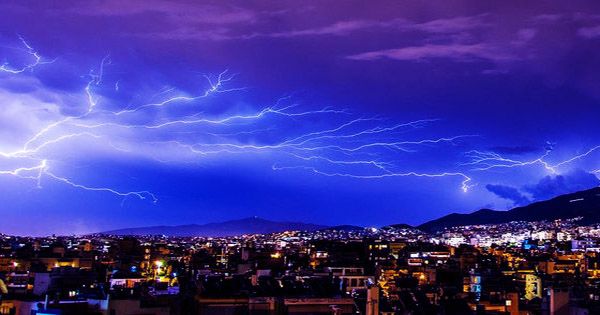The World Meteorological Organization (WMO) has confirmed an unprecedented thunderstorm strike that split the skies of Brazil in 2018, setting a new world record for the longest thunderstorm. Reaching York09 kilometers (440 miles) long – distance from New York to Charleston, WV – “Brazil’s only electricity limit” was recorded on October 31, 2018, in southern Brazil. The WMO’s committee on weather and climate final has announced.
That wasn’t the only flamboyant record-breaker declared by the United Nations Meteorological Agency. On March 4, 2019, thanks to a 16.7-second-long “mega flash” across northern Argentina, the record for the longest duration of a lightning bolt was also broken.
Two new records have more than doubled the floor with previous record holders. The previous record for the longest distance was 321 kilometers (199 miles) recorded in Oklahoma in 2007 and the time record was only 74.744 seconds in August 2012 compared to Provence-Alpes-Côte d’Azur in France.
Professor Randall Cerveny, chief rapporteur of Weather and Climate Extremes for WMO, and co-author of the study confirming these findings in Geophysical Research Letters said, “These are outstanding records for single lightning flash events.”Environmental finality is a living measure of what nature is capable of, as well as scientific progress to be able to make such a national assessment. Perhaps it is that even greater extremes still exist, and with the advancement of lightning detection technology we will be able to observe them.”
Previously, lightning was tracked using data from ground-based sensors called landing mapping array networks, which detect radio waves. Electrical scientists, however, acknowledged that there was a higher limit to measuring electricity that could be detected using these and that more extreme power tracking would require a scale-up of technology. In 2016, the U.S. National Oceanic and Atmospheric Administration (NOAA) launched the world’s first power-mapping satellite to operate in underground orbit, tracking the Earth’s weather from 36,000 kilometers (22,300 miles) above us.
This means that not only can we observe Earth’s weather 24/7, but the increased activity of lightning is usually a good indicator of tropical cyclones and thunderstorms, forecasters now have a more accurate idea of what is happening. Working on the Geostationary Operational Environmental Satellite (GEOS) it was this lightning-mapping tool that set two new records.
There are different types of lightning. Lightning strikes are always accompanied by lightning and they both occur at the same time but with lightfast travel, you often see lightning before you hear lightning. Most lightning strikes begin in a thunderstorm cloud and then stay in the cloud or travel through the air either toward another cloud or eventually hit the ground. Both record-breaking flashes occurred from cloud to cloud without touching the ground but why were they so powerful?
There are two hotspots in America where the mesoscale Convection System – a large cluster of thunderbolts or “superstars” – joins: the Great Plains of North America and the La Plata Basin of South America. These superstars occur on a scale that allows for remarkable mega lashes. Now that we have the technology to observe and monitor this mega flash, these new records are very unlikely to last long.
















